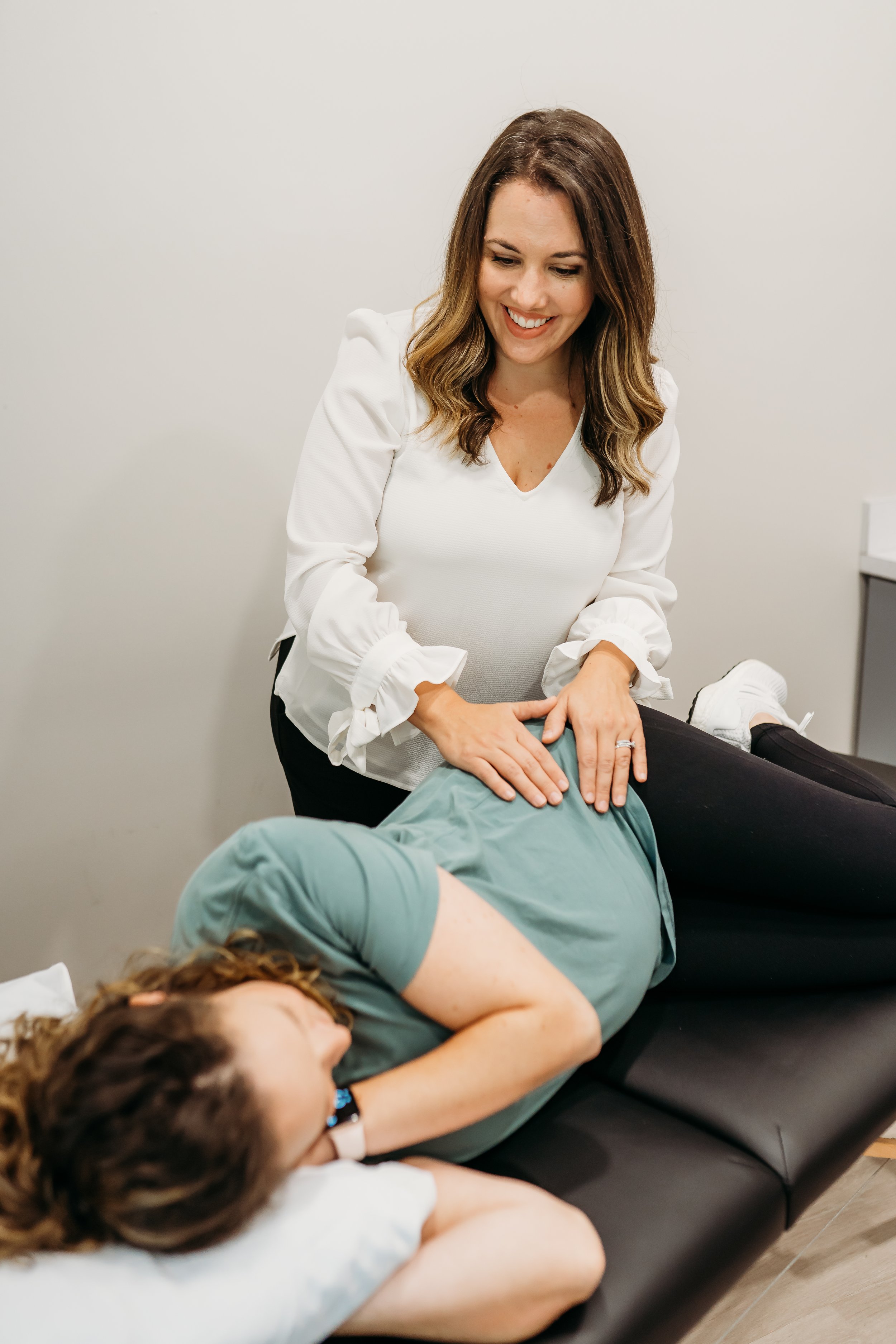
Pelvic Organ Prolapse
Pelvic Organ Prolapse is extremely common. While it can occur in all people, it impacts many individuals after pregnancy and childbirth.
Prolapse occurs when there is a loss of support in the fascial and muscular structures around the vagina near the bladder, uterus and rectum.

How Pelvic Organ Prolapse Can Present
People experiencing prolapse can have symptoms like pelvic heaviness, a bulge in the vagina, difficulties with bladder or bowel function, and low back aching. Sometimes these symptoms begin after childbirth, however, it can also develop gradually over time. For many people, these problems can worsen over the course of the day, and may worsen with increased activity or exercise.
What Is Going On Inside
Pressure within the pelvis is controlled through a coordinated system of muscles working in combination with the ligamentous and fascial structures providing organ support. These muscles include the pelvic floor muscles, the respiratory diaphragm, deep abdominal muscles and the low back muscles. They are also impacted by structures within the thorax, even up to the vocal folds.
Prolapse is a supportive problem, thus it is important to consider the systems involved in pressure modulation to build strategies to best optimize pressure control and decrease pressure on pelvic structures.
Our Expert Physical Therapists Are Here to Help
At SPH, we always aim to treat the whole person. We start with a comprehensive examination to determine what is happening around the body and within the pelvis that may be contributing to the problems you are experiencing. We also evaluate very specifically at the pelvic floor muscles and the structures around them to help you determine the best course of treatment for you.
Treatment Typically Includes
-
Specific exercises aiming to improve strength and optimize coordination for the pelvic floor muscles and the structures around the pelvis.
-
Specific exercises to retrain the coordinated and automatic function of your pelvic floor muscles and improve modulation of pressure within the pelvis.
-
Manual therapies if needed, including myofascial release, visceral mobilization, and/or dry needling to help improve muscle length and sensitivity around the pelvis and improve tension for pressure management.
-
Education to build strategies to optimize your bowel and bladder health and habits.
-
Postural retraining and specific strategies to improve your body mechanics, movement, and pressure modulation.
-
Much more ~ customized to you and what we identify together in your first visit and examination.
Our providers are also trained in fitting pessaries which can be useful supportive devices to help with symptoms of prolapse. We also have the capacity to utilize tools and modalities like surface-EMG biofeedback or electrical stimulation if needed for your program.
You Are Not Alone
More Resources For Navigating Prolapse

★ ★ ★ ★ ★
SPH and Dr. Claire Layman have improved my quality of life to such a huge degree since suffering a trifecta of prolapse issues after surgery…I cannot say enough about how grateful I am to have found both the support and treatment I need for such an unexpected situation. They are on top of the most recent research and techniques and I can't imagine going anywhere else. Highly, highly recommend them for pelvic issues.








